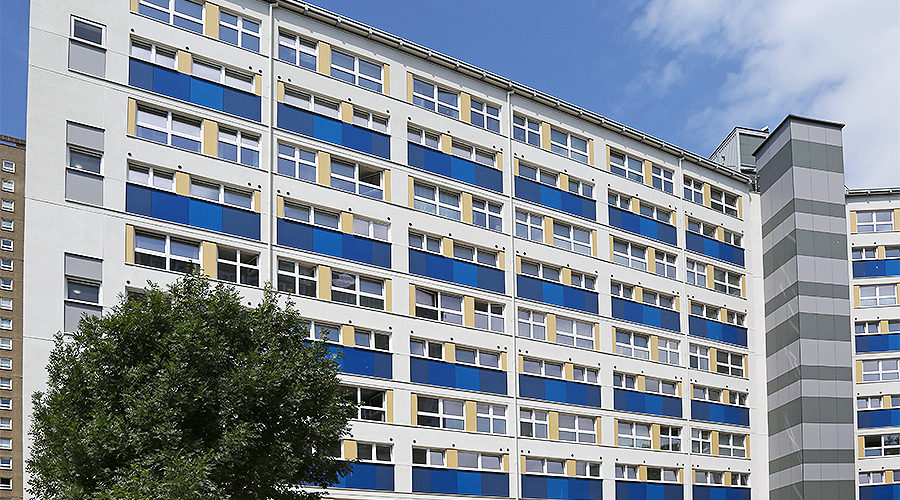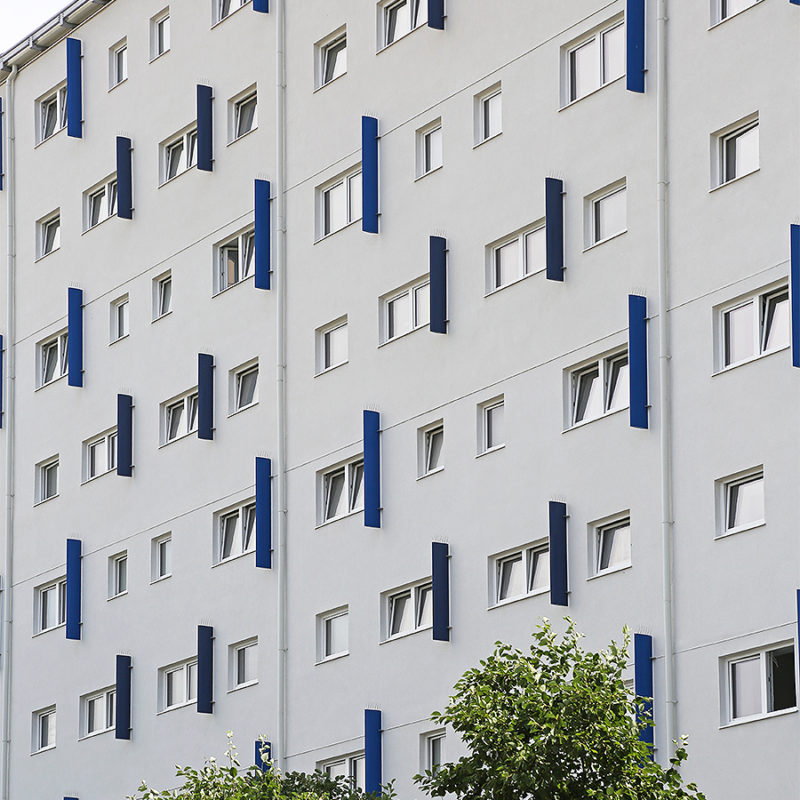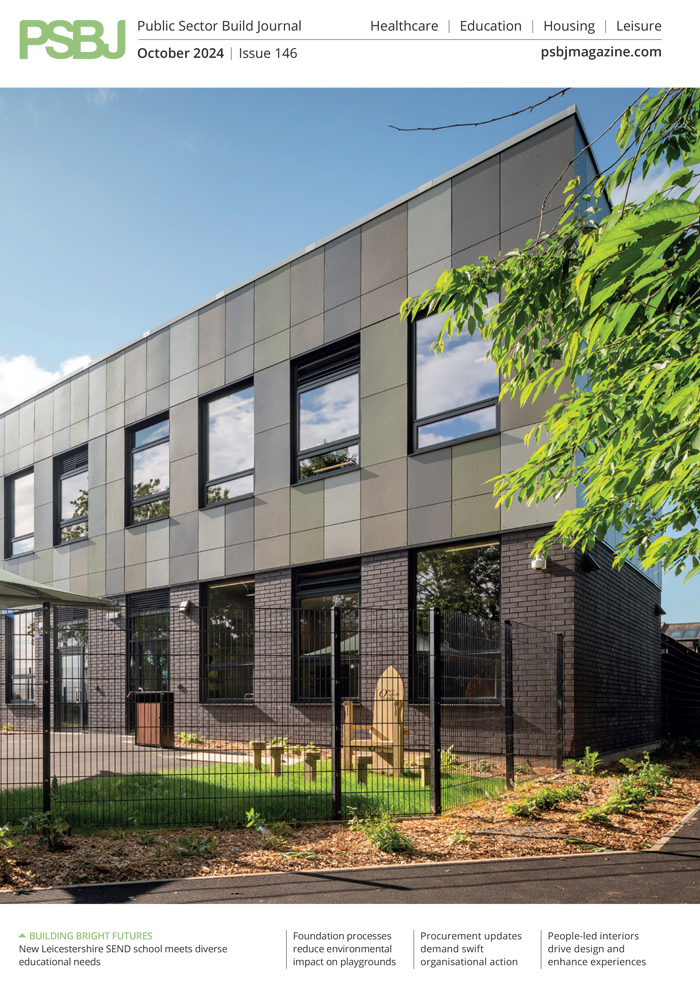Built in their thousands by local authorities in the 1960s and 1970s to address housing shortages and to re-accommodate those living in substandard homes, high-rise, high-density housing is a prominent feature of Britain’s urban landscape.
ROCKWOOL
With evolving living and regulatory needs, the thermal performance of these buildings often falls below today’s requirements, meaning remedial action is needed to bring them up to modern standards.
An example of this is Wilmcote House in Portsmouth, which required significant improvements – including retrofit insulation upgrades – to ensure quality of life for its residents.
Across a four-year programme, over 100 residences within Wilmcote’s three 11-storey blocks were set for upgrades to provide comfortable, safe and thermally-efficient homes for residents that will endure for years to come.
Wilmcote House would become the largest EnerPHit (the retrofit equivalent of Passivhaus) standard scheme delivered with residents in-situ. A key objective of the major renovation, designed and led by ECD Architects, was the creation of an environment capable of supporting the health and wellbeing of tenants.
The challenge
Wilmcote House was identified as one of Portsmouth City Council’s high-rise developments most urgently in need of improvement. Fuel poverty was a cause for concern, as well as damp, mould and condensation.
The University of Southampton aided by installing data loggers into properties, which revealed compelling results. Residents were not heating their homes to the World Health Organisation comfort level of 18°C, as their electric heating was too expensive.
Following a detailed appraisal, Portsmouth City Council engaged ECD Architects to design and lead a substantial renovation tasked with delivering the scheme to the ambitious EnerPHit standard in a bold, fabric-first approach. They targeted a reduction in dwelling heating demand by 90% and a minimum 30-year extension to the lifetime of the estate, with the entire project carried out as residents remained in situ.
The solution
ECD’s whole-building EnerPHit solution centred on deep retrofit. This involved the super-insulation of Wilmcote House using a combination of several products and systems, including a Rockpanel-cladded facade system and a combination of ROCKWOOL external wall and flat-roof insulation together with a selection of the company’s fire-stopping and fire-protection products.
The ROCKWOOL external insulation was fitted as a 300/400mm zone fixed to newly-assembled, external steel frames to insulate and wrap the entire building. The result is improved thermal performance and enhanced airtightness, reducing draughts, condensation and mould growth.
“Due to the fabric improvements, we’re now more confident that the residents don’t need as much heating in their properties,” explains Steve Groves, Head of Building Maintenance at Portsmouth City Council. “In fact, we’re looking to take out some of the existing storage heaters so that there is a maximum of two per property – one in the lounge and one in the downstairs hall.
“We’ve been through a winter season, so we know that residents in completed properties are not using their heating.”
Loreana Padron, Associate Director and Head of Sustainability at ECD Architects, comments: “Before, the residents tended to stay in one room with the heating on and not really use the whole flat. Now, because it is warm, they are using the whole flat and some have already reported improvements in terms of health.”
Other works at Wilmcote House included roof replacement, installation of triple-glazed windows, extension of the living areas, and more efficient heating and hot water and adjustment of the ventilation with a heat recovery system.
The refurbishment brought the community together by improving the appearance of the estate and investing occupants with a greater sense of pride in their surroundings.
Community engagement was a major theme throughout the project. Residents of Wilmcote House were comprehensively consulted on the refurbishment proposals via a series of resident open days and feedback sessions, and dialogue was maintained throughout the build.
The social and performance outcomes of the project will continue to be monitored by a partnership between ROCKWOOL, the London School of Economics (LSE) and the University of Southampton.
The result
Wilmcote House is the largest residential EnerPHit project delivered with residents in-situ in the world and is a testament to what can be achieved by taking a holistic, fabric-first, people-focused approach to building refurbishment.
“Over the 30-year lifespan, the EnerPHit option makes financial and environmental sense,” comments James Traynor, Managing Director of ECD Architects. “With the simplicity of the system, the fact that you’re actually taking away or reducing the use of many technologies, except MVHR, which is running in the background, it was an obvious choice.”
The council has dramatically improved the living environment and quality of life of residents, investing in people, not just the physical condition of the housing stock to reduce future maintenance burdens. And the anecdotal evidence and feedback received so far has the project already proving to be a big success, as residents in completed properties experience the positive impacts on their health, wellbeing and reduced fuel bills.
In 2018, the scheme received two RICS awards – one for Design Through Innovation, another for Regeneration, and it also secured a Constructing Excellence Award for Sustainability.











